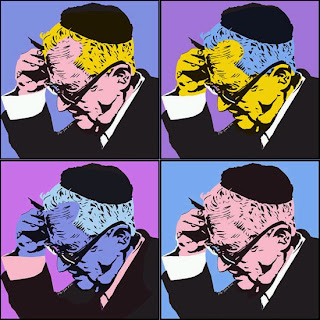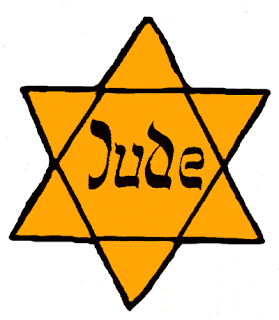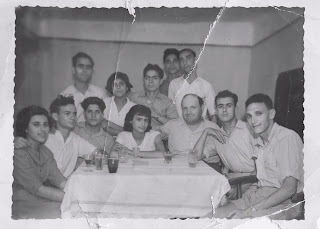
July 3, 2008
Parashat Chukat (Numbers 20:1-22:1)
Just like that, she was gone.
With no forewarning, Parashat Chukat tells us "Miriam died there and was buried there" (Numbers 20:1). "She died with a Divine kiss," the Talmud says, and with that one kiss, the sole female voice in the Israelite camp was gone.
Who was Miriam? She is the only woman in the Torah who bears the title "Neviah" -- prophetess. So who was she?
We first meet her anonymously, without any proper name. She is referred to as "his sister," that is, the older sister of a little boy whose mother hid him in a basket on the Nile River. Once the mother placed the baby in the basket, "His sister stationed herself at a distance, to learn what would befall him" (Exodus 2:4). When Pharaoh's daughter discovers the basket with the crying baby, "His sister said to Pharaoh's daughter: ' Shall I go and get you a Hebrew nurse to suckle the child for you?'" (Exodus 2:7) Miriam is first described as a loving and caring sister, who saw to it that her baby brother Moses was protected and cared for.
We next encounter Miriam on the banks of the Red Sea, following the Song at the Sea. It is there that we first learn her name and title: "Then Miriam the prophetess, Aaron's sister..." (Exodus 15:20). It is strange, the Talmud remarks, that she is referred to as "Aaron's sister": "Was she only the sister of Aaron and not the sister of Moses?" Through this question, the Talmud actually probes a deeper question: Why was Miriam accorded the spiritual title of "prophetess"? Rabbi Nachman taught in the name of Rav, that Miriam was referred to as "the prophetess, Aaron's sister," because at the moment in her life when she first experienced prophecy, Aaron was her only brother. This takes us back to the early period of the Israelite enslavement, when Miriam is said to have predicted: "My mother is destined to bear a son who will save Israel" (Seder Olam 3, Megilla 14a). When Moses was born, the Talmud says, the whole house was filled with light, a divine indication that Miriam's prediction was in fact a prophecy.
At the Red Sea, Miriam the prophetess organized the first spiritual gathering for Israelite women. Miriam "took a timbrel in her hand, and all of the women went out after her in dance with timbrels, and Miriam chanted for them: Sing to the Lord, for He has triumphed gloriously" (Exodus 15:20-21). Miriam's song and dance was, according to Rabbenu Bahya, a "direct address and praise to the Shekhina," the feminine side of God. Miriam the prophetess was the first feminine voice to directly address the God of Israel.
Miriam's next episode is more controversial. Miriam "spoke against Moses, because of the Cushite woman he had married" (Numbers 12:1). What happened to her younger brother that Miriam criticized him? He had now become Moses the devoted "Man of God," and it was on this that Miriam had a critique. In becoming a prophet and "Man of God," Rashi says, Moses first separated from and then ultimately divorced his wife, the "Cushite Woman" (understood by Rashi to be Zipporah). Miriam expressed disappointment at her younger brother's abandonment of his wife, with an underlying critique of the concept of holiness achieved at the expense of a normal family life. God punishes Miriam, afflicting her with leprosy. How did the Israelite camp feel about Miriam's words and her subsequently being "shut out of the camp for seven days"? The fact that the Torah tells us "the people did not march on until Miriam was readmitted" (Numbers 12:15) is a strong indication that the community understood the need for her powerful presence. Without her, they lacked the sensitive voice of a woman.
This brings us to Miriam's sudden death. The lone prophetess of Israel dies, and in the very next verse, "The community was without water" (Numbers 20:2). The Talmud teaches: "Water is likened to Torah." The impact of Miriam's death was the drying of Miriam's Well -- a Well of Torah that had drenched the community with what Proverbs calls "Torat Imekha -- "The Torah of your Mother." The Israelites lost the sensitive, feminine voice of Torah -- the voice that not only foresaw the birth of a savior but also instinctively protected him, the voice that sensually sang and danced to the Shekhina, and the voice that risked punishment by reminding the Israelites that spirituality is as much about family as it is about God.
Miriam did not speak often, but when she did, she mirrored the closing lines of the "Woman of Valor" poem, chanted every Erev Shabbat around the table: "She opens her mouth with wisdom, and the Torah of kindness is on her tongue."
Miriam reminded her brother Moses, and all of us, that "Torah" is a lot more than just a "Holy Scroll."
© Copyright 2008 The Jewish Journal and JewishJournal.com


